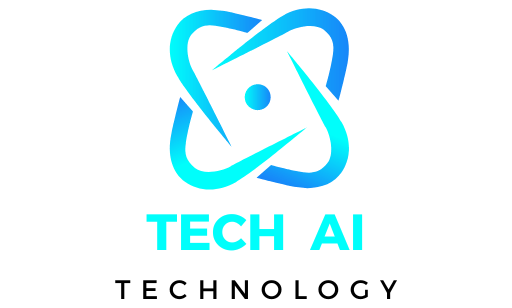Choosing between Python or JavaScript for backend development in 2025 is a big decision, especially as both languages continue to evolve. Python, known for its scalability, security, and AI driven capabilities, is widely used in data science, machine learning, and enterprise applications.
On the other hand, JavaScript with Node.js dominates real time applications, serverless computing, and full stack development, making it a top choice for high speed APIs and scalable web apps. So, which one is better for your project? In this guide, we’ll compare performance, security, scalability, and best use cases to help you decide. Whether you’re a developer, startup owner, or tech enthusiast, this up to date breakdown will ensure you make the smartest choice!
Python or JavaScript for Backend: Which One to Choose in 2025?
Both Python and JavaScript are great for backend development, but the best choice depends on your needs. Python is perfect for AI applications, machine learning, and secure enterprise software. JavaScript with Node.js is best for real time apps, high speed APIs, and full stack development.
If you need fast, scalable, and event driven applications, go with JavaScript. For data heavy, AI powered, and automation based projects, Python is the better choice. Let’s compare their performance, scalability, and security to help you decide.
Performance: Which One is Faster?
JavaScript (Node.js) is faster because of its non blocking, asynchronous architecture. It’s perfect for real time applications, chat apps, and streaming services. Python is slower since it’s interpreted, but frameworks like FastAPI and Django improve its speed. If you need low latency, high performance backend systems, JavaScript is the better option.
Scalability: Which Backend Language Scales Better?
Both Python and JavaScript handle scalability differently. Node.js is highly scalable, making it ideal for microservices, cloud applications, and distributed systems. Companies like Netflix and Uber use it for high performance apps. Python scales well for enterprise applications, AI projects, and automation.
If you need fast growing, cloud based applications, JavaScript is better. For AI driven, structured scaling, Python is a great choice.
Security: Which One is More Secure?
Python is known for strong security and is widely used in cybersecurity, AI, and enterprise software. It has built in protection against SQL injection, XSS, and CSRF attacks. JavaScript (Node.js) has improved security but needs extra measures like secure authentication and package auditing. If your project deals with sensitive data and financial transactions, Python is a safer choice.
Best Use Cases: When to Choose Python or JavaScript?
- Use Python for AI, machine learning, automation, and enterprise level software. It’s great for data analysis, backend APIs, and cybersecurity applications.
- Use JavaScript (Node.js) for real time applications, high speed APIs, and scalable web apps. It’s ideal for e-commerce, chat applications, and social media platforms.
What is Backend Development?

Backend development is the foundation of any web application. It handles server operations, database management, and API integrations. Unlike the frontend, which users interact with, the backend works behind the scenes, processing requests and delivering data.
Definition and Role of Backend in Web Development
The backend is the core of a website, managing logic, security, and communication between the server and database. It ensures smooth data processing, user authentication, and performance optimization. Backend developers build scalable and efficient systems using frameworks like Node.js, Django, or Laravel.
How Backend Powers the Server, Database, and APIs
Backend development involves managing the server, database, and APIs. The server processes user requests and sends responses. The database stores and retrieves information efficiently. APIs (Application Programming Interfaces) connect the frontend and backend, enabling seamless interactions. Technologies like RESTful APIs and GraphQL enhance data communication.
Importance of Choosing the Right Programming Language for Backend
Selecting the right programming language affects performance and scalability. Popular backend languages include:
- JavaScript (Node.js): Asynchronous and event driven for real time applications.
- Python (Django, Flask): Scalable and widely used in AI and machine learning.
- PHP (Laravel): Secure and reliable for web applications.
- Java (Spring Boot): Ideal for enterprise solutions.
Choosing a backend language depends on project requirements, security, and scalability needs.
Python for Backend Development: A Complete Overview
What is Python, and Why is It Used for Backend?
Python is a powerful, high level programming language known for its simplicity and versatility. It is widely used in backend development due to its clean syntax, extensive libraries, and seamless integration with databases.
Developers prefer Python because it speeds up development, enhances security, and supports scalable applications. Many web applications rely on Python’s efficiency to handle complex backend processes, including data management, API development, and server side scripting.
Key Features of Python for Backend
- Easy Syntax: Python’s readable and beginner friendly syntax reduces development time.
- Strong Libraries: Pre built libraries like NumPy, Pandas, and TensorFlow streamline backend operations.
- AI & Machine Learning Integration: Python is a leading choice for AI driven applications and automation.
- Security: Python frameworks offer built in security features to prevent cyber threats.
- Scalability: Ideal for handling high traffic applications with load balancing and efficient resource management.
Popular Python Frameworks for Backend
Python has several powerful frameworks that simplify backend development:
- Django: A full stack framework with built in authentication, ORM, and security features.
- Flask: A lightweight and flexible micro framework perfect for small to mid sized applications.
- FastAPI: A high performance framework designed for building APIs with automatic documentation.
Who Uses Python? Top Companies Using Python for Backend
Many tech giants rely on Python for their backend infrastructure:
- Google: Uses Python for data analysis, cloud computing, and AI powered services.
- Instagram: Django powers its backend, handling millions of user interactions daily.
- Netflix: Uses Python for content recommendation, server automation, and data processing.
- Spotify: Leverages Python for machine learning, data analytics, and API management.
- Uber: Uses Python to optimize real time ride matching algorithms.
Python remains a top choice for backend development in 2025, enabling developers to build secure, scalable, and AI driven applications. Whether you’re working on a startup or an enterprise level project, Python’s efficiency and flexibility make it an excellent backend technology. 🚀
JavaScript for Backend Development: A Complete 2025 Overview

What is JavaScript, and How Does It Work in Backend Development?
JavaScript is a powerful, high level programming language widely used for web development. Initially a front end language, JavaScript now plays a key role in backend development.
With the help of Node.js, JavaScript can run on servers, handling requests, databases, and APIs efficiently. It enables developers to build scalable, high performance applications with seamless client server communication.
Role of Node.js in Making JavaScript a Backend Language
Node.js revolutionized JavaScript, making it a dominant backend language. It is a runtime environment that allows JavaScript to run outside the browser. Built on the V8 engine, Node.js executes code faster, making it ideal for real time applications.
It enables event driven, non blocking I/O operations, improving server response times. With Node.js, developers can use a single language (JavaScript) for both frontend and backend, simplifying full stack development.
Key Features of JavaScript for Backend Development
1. Asynchronous Programming
JavaScript uses async/await and promises, allowing non blocking execution. This speeds up database queries, API requests, and file operations, making applications more efficient.
2. Real Time Processing
JavaScript powers real time features like live chat, notifications, and data streaming. With WebSockets and frameworks like Socket.io, developers can build interactive, real time web applications.
3. Full Stack Capabilities
JavaScript enables full stack development using the MERN (MongoDB, Express.js, React, Node.js) or MEVN (MongoDB, Express.js, Vue.js, Node.js) stack. Developers can manage both frontend and backend with a single language, streamlining development.
Popular JavaScript Backend Frameworks
1. Express.js
A minimalist, fast, and flexible framework used to build RESTful APIs and web applications. Express.js simplifies routing, middleware integration, and request handling.
2. Nest.js
A TypeScript based framework designed for scalable and maintainable backend applications. It provides a structured architecture with support for microservices and GraphQL.
3. Next.js
While primarily a frontend framework, Next.js offers powerful backend capabilities, including API routes and server side rendering (SSR). It is widely used for full stack applications.
Companies Using JavaScript for Backend
Top tech companies rely on JavaScript and Node.js for their backend:
- Netflix: Uses Node.js to enhance performance and reduce startup time.
- LinkedIn: Moved from Ruby on Rails to Node.js for better scalability.
- Uber: Uses Node.js for handling real time ride matching services.
- PayPal: Improved response times and reduced code duplication by switching to Node.js.
Performance Comparison: Python vs JavaScript in 2025
Choosing between Python and JavaScript for performance depends on the use case. Both languages have evolved with new optimizations. JavaScript is known for fast execution in web apps, while Python has improved speed with JIT compilation and FastAPI. Let’s compare their performance in 2025.
Speed and Execution: Which One is Faster?
JavaScript is faster than Python for real time applications. It runs on the V8 engine, which compiles code to machine language quickly. Python, traditionally slower, has improved with Just In Time (JIT) compilation in PyPy and better async frameworks like FastAPI. However, JavaScript still leads in raw execution speed.
JavaScript’s Event Driven Model for Real Time Apps
JavaScript uses a non blocking, event driven model, making it perfect for real time applications like chat apps, streaming services, and stock trading platforms. Node.js handles multiple connections efficiently with its asynchronous I/O, reducing latency. This makes JavaScript ideal for high performance, scalable applications.
Python’s Performance Boost with FastAPI and JIT Compilation
Python has historically been slower due to interpreted execution, but in 2025, it has seen major performance upgrades. FastAPI leverages asynchronous programming, making Python competitive for high speed APIs. JIT compilation in PyPy also accelerates execution, improving response times in machine learning and backend applications.
Async Programming and Multi Threading Impact
Asynchronous programming allows both JavaScript and Python to run multiple tasks efficiently. JavaScript’s event loop ensures smooth execution without blocking operations. Python’s asyncio and multi threading improvements reduce delays in data heavy tasks. However, JavaScript handles concurrency better due to its optimized single threaded event driven architecture.
Scalability: Which One is More Scalable?
When choosing between JavaScript with Node.js and Python for scalability, understanding their strengths is crucial. Each excels in different areas, making them ideal for specific use cases.
JavaScript with Node.js: Microservices, Cloud Computing, and Event Driven Architecture
Node.js is built for high performance applications, making it a strong choice for real time systems. Its event driven, non blocking architecture allows efficient handling of multiple connections, making it ideal for scalable web applications.
Startups favor Node.js for microservices because it integrates well with cloud platforms like AWS and Google Cloud. It powers event driven applications, such as chat apps, online gaming, and IoT solutions, ensuring smooth performance even under heavy loads.
Python: Enterprise Scalability, AI Driven Platforms, and Data Heavy Applications
Python dominates enterprise applications, AI driven platforms, and big data solutions. It scales well for data intensive applications like machine learning models and predictive analytics.
Python’s extensive libraries, including TensorFlow, PyTorch, and Pandas, make it the best choice for AI development. Large companies rely on Python for backend scalability, especially in fintech, healthcare, and automation.
Best Choice for Startups vs Large Scale Applications
For startups, Node.js is often preferred due to its speed, scalability, and cost efficiency. It enables faster development cycles with lightweight and asynchronous processing. For large scale enterprise solutions, Python stands out with its robust frameworks, AI integration, and backend scalability.
Security: Which Backend Language is More Secure?

Security is a top priority for developers in 2025. Backend languages like Python and JavaScript play a crucial role in protecting applications from cyber threats. Let’s compare their security features and best practices.
Python’s Built in Security for Enterprise Applications
Python is known for its strong security features in enterprise applications. It has built in libraries like hashlib, secrets, and pycryptodome to handle encryption, secure authentication, and data protection. Python frameworks such as Django and Flask offer built in security against SQL injection, cross site scripting (XSS), and cross site request forgery (CSRF).
Python’s static typing with Type Hints enhances security by reducing type related vulnerabilities. Its automatic memory management prevents buffer overflow attacks, making it a preferred choice for secure backend development in 2025.
JavaScript Security Concerns: Dependency Risks & Authentication Vulnerabilities
JavaScript dominates backend development with Node.js, but it faces security challenges. The NPM ecosystem has a vast number of third party packages, increasing the risk of dependency vulnerabilities. Attackers often exploit supply chain attacks, injecting malicious code into widely used packages.
Authentication vulnerabilities like weak JWT token implementation, poor session management, and cross origin resource sharing (CORS) misconfigurations can expose applications to threats. Real time applications built with WebSockets in Node.js require extra security layers to prevent data breaches and man in the middle (MITM) attacks.
Best Security Practices for Python & JavaScript in 2025
- ✅ Use Updated Libraries: Regularly update Python’s pip and JavaScript’s NPM packages to patch security flaws.
- ✅ Secure Authentication: Implement OAuth 2.0, multi factor authentication (MFA), and role based access control (RBAC) for user security.
- ✅ Encrypt Data: Use AES encryption, TLS 1.3, and end to end encryption (E2EE) to secure data in transit and at rest.
- ✅ Sanitize Inputs: Prevent SQL injection and XSS attacks with input validation and escaping techniques.
- ✅ Monitor Dependencies: Use tools like Snyk, OWASP Dependency Check, and npm audit to detect and fix vulnerabilities in third party packages.
- ✅ Server Side Security: Harden APIs by implementing rate limiting, CORS policies, and secure cookie handling.
Use Cases: When to Choose Python or JavaScript?
Choosing between Python and JavaScript depends on the project’s needs. Python excels in AI applications, machine learning, cybersecurity, and automation, while JavaScript is ideal for real time applications, microservices, high speed APIs, and e-commerce platforms. Let’s explore industry based use cases to help you decide.
When to Use Python
Python is powerful for AI driven development and data intensive applications. Its clean syntax and vast libraries make it a top choice for:
1. AI and Machine Learning
Python dominates artificial intelligence and machine learning models. Libraries like TensorFlow, PyTorch, and Scikik learn streamline deep learning, NLP, and predictive analytics.
2. Cybersecurity
Python is widely used in ethical hacking, threat analysis, and security automation. Tools like Metasploit, Nmap, and Scapy help cybersecurity professionals analyze vulnerabilities.
3. Automation and Scripting
Python simplifies task automation, data scraping, and backend scripting. Developers use Selenium, BeautifulSoup, and Pandas for data handling and workflow automation.
4. FinTech and Data Science
Financial institutions use Python for fraud detection, stock market predictions, and financial modeling. It integrates well with big data analytics and cloud computing.
When to Use JavaScript
JavaScript powers interactive web development and high performance applications. It is crucial for:
5. Real Time Applications
JavaScript is ideal for live chat apps, streaming platforms, and online gaming. Technologies like Node.js, WebSockets, and WebRTC ensure smooth real time interactions.
6. Microservices and High Speed APIs
Developers use JavaScript to build scalable APIs and microservices architectures. Frameworks like Express.js and NestJS improve backend efficiency.
7. E-Commerce Platforms
JavaScript enhances e-commerce websites with dynamic content, seamless checkout, and performance optimization. Platforms like Shopify, Magento, and WooCommerce rely on it.
8. SaaS and Social Media Platforms
JavaScript drives software as a service (SaaS) applications and social media websites. React, Angular, and Vue.js help create fast, responsive, and scalable user experiences.
Python vs JavaScript: Cost, Development Time, and Hiring in 2025

1. Cost and Development Time
Python and JavaScript are both widely used in software development, but they differ in cost and time efficiency. Python is ideal for quick prototyping and AI based applications, while JavaScript is best for interactive web applications and front end development.
Python’s simple syntax reduces coding time, whereas JavaScript requires more effort for backend tasks. If time is a priority, Python is faster for complex computations, while JavaScript excels in real time web applications.
2. Which One is More Cost Effective?
Python’s extensive libraries and frameworks help developers build applications faster, reducing overall development costs. However, JavaScript developers often use frameworks like React, Vue, and Node.js, which can also cut down costs for web applications.
For AI, data science, and backend development, Python is more cost efficient, while JavaScript is better for dynamic web applications with high user interaction.
3. Hiring Developers: Python vs JavaScript Salaries in 2025
In 2025, Python developers will continue to be in high demand due to AI, machine learning, and data science trends. JavaScript developers remain essential for web and mobile applications. According to the latest salary trends:
- Python developers earn between $90,000 and $140,000 per year, depending on expertise in AI, backend, or automation.
- JavaScript developers make around $80,000 to $130,000 annually, with higher salaries for full stack and React/Node.js expertise.
Python developers tend to command higher salaries due to the increasing demand in AI driven industries. JavaScript developers are more common, making hiring slightly more affordable.
4. Learning Curve and Ease of Development
Python is easier to learn due to its readable, beginner friendly syntax. It’s often recommended for new programmers, data science, and AI development. JavaScript, on the other hand, requires understanding asynchronous programming, event driven architecture, and frontend/backend frameworks.
- For beginners: Python is the better choice.
- For web developers: JavaScript is essential.
- For AI, automation, and backend: Python dominates.
Python vs JavaScript: Community Support and Job Market in 2025
Python and JavaScript are two of the most popular programming languages. Both have strong community support, but their roles differ. Python dominates AI, machine learning, and enterprise software. JavaScript powers web development, full stack applications, and cloud services. Let’s compare their developer resources and job demand in 2025.
1. Developer Support and Resources
Python and JavaScript have massive developer communities. Python has active forums like Stack Overflow, GitHub, and Reddit. It offers extensive documentation and frameworks like TensorFlow and Django. JavaScript thrives with support from React, Node.js, and front end libraries. Online courses, coding bootcamps, and open source projects make both languages beginner friendly.
2. Python’s Growth in AI, Machine Learning, and Enterprise Software
Python is the leading language for artificial intelligence and automation. Libraries like TensorFlow, PyTorch, and Scikit learn power deep learning and data science. Large enterprises prefer Python for backend systems, automation, and cybersecurity. The demand for Python developers in AI and enterprise solutions continues to grow in 2025.
3. JavaScript’s Role in Web Development and Cloud Services
JavaScript remains essential for front end and full stack development. Frameworks like React, Angular, and Vue.js enhance user experiences. Node.js enables server side scripting, making JavaScript a full stack solution. Cloud platforms like AWS and Firebase support JavaScript, making it vital for scalable web apps and SaaS platforms.
4. Job Market: Python vs JavaScript in 2025
Python developers are in high demand for AI, data analytics, and cybersecurity. Companies seek Python expertise for automation, backend systems, and machine learning. JavaScript remains the top choice for web applications, SaaS products, and mobile development. Full stack developers proficient in JavaScript and cloud computing will be highly sought after.
Future of Python and JavaScript in Backend Development (2025)

Trends and Updates in Python for Backend Development in 2025
Python remains a dominant choice for backend development, with advancements in Django, Flask, and FastAPI making it more efficient. AI driven backend automation is transforming Python frameworks, improving speed and scalability.
Asynchronous programming in Python has evolved, making it a strong competitor for high performance applications. Machine learning integration with backend APIs is a rising trend, allowing seamless AI model deployment. The demand for serverless Python applications is growing, with platforms like AWS Lambda and Google Cloud Functions optimizing backend workflows.
JavaScript and Node.js Improvements and New Frameworks
JavaScript continues to lead in backend development with Node.js 21 bringing enhanced performance, better security, and native TypeScript support. Deno, an alternative to Node.js, is gaining traction with improved security and built in package management.
Bun, a new JavaScript runtime, is designed for ultra fast backend execution, reducing startup times and boosting API responses. JavaScript frameworks like NestJS and Fastify are now preferred for scalable applications. Edge computing with JavaScript is expanding, offering real time processing for IoT and microservices.
Predictions: Which Backend Language Will Dominate in the Future?
The competition between Python and JavaScript in backend development will intensify. Python will dominate AI powered applications, data science backends, and automation, while JavaScript will lead in web services, real time applications, and microservices architecture.
Full stack development trends favor JavaScript, while Python remains the go to for scientific and AI driven applications. With growing demand for scalable, high performance backend solutions, developers will need to master both languages to stay competitive in 2025 and beyond.
FAQs:
Q1. Which is better for backend development in 2025, Python or JavaScript?
Both Python and JavaScript are excellent for backend development, but the choice depends on your needs. Python is best for AI, data heavy applications, and security, while JavaScript (Node.js) is ideal for real time apps, scalability, and speed.
Q2. Is Python or JavaScript faster for backend development?
JavaScript (Node.js) is faster due to its non blocking, asynchronous architecture. However, Python has improved speed with FastAPI and Just In Time (JIT) compilation, making it more efficient for data heavy applications.
Q3. Which language is more scalable, Python or JavaScript?
JavaScript is more scalable because of its microservices architecture and event driven model. Python is great for AI driven applications and enterprise solutions, but it may require extra optimization for high traffic systems.
Q4. Which backend language is more secure, Python or JavaScript?
Python is generally more secure due to its built in security features and strong encryption support. JavaScript requires additional security measures to prevent common vulnerabilities like XSS and SQL injection.
Q5. Can I use both Python and JavaScript for backend development?
Yes! Many developers use Python for AI, data processing, and APIs while using JavaScript (Node.js) for high speed, scalable applications. Combining both can enhance performance and flexibility.
Q6. Which is easier to learn, Python or JavaScript for backend?
Python is easier to learn due to its simple syntax and readability. JavaScript requires understanding asynchronous programming and Node.js, which has a steeper learning curve for beginners.
Q7. Which backend language is better for AI and machine learning?
Python is the best choice for AI and machine learning because of its powerful libraries like TensorFlow, PyTorch, and Scikit Learn. JavaScript has AI capabilities, but Python dominates this field.
Q8. Is Node.js replacing Python for backend development?
No, Node.js is not replacing Python. Both have different strengths Node.js is best for real time apps and fast APIs, while Python excels in AI, automation, and data science.
Q9. What are the job prospects for Python and JavaScript backend developers in 2025?
Both Python and JavaScript have high demand in 2025. Python developers are needed for AI, machine learning, and cybersecurity, while JavaScript developers are in demand for web development and scalable cloud applications.
Q10. Which backend language should I choose for my project?
Choose Python if your project involves AI, automation, or data heavy applications. Choose JavaScript (Node.js) if you need scalable, real time applications with fast APIs.
Conclusion:
Both Python and JavaScript are powerful choices for backend development in 2025. Python is best for AI, automation, and secure enterprise applications, while JavaScript (Node.js) excels in real time, scalable web apps. The right choice depends on your project needs.
If you want fast, event driven performance, go with JavaScript. If you need data processing, AI, or security, Python is the better option. Both have strong job markets and growing communities, so whichever you choose, you’ll be on the right path for a successful backend career. 🚀

